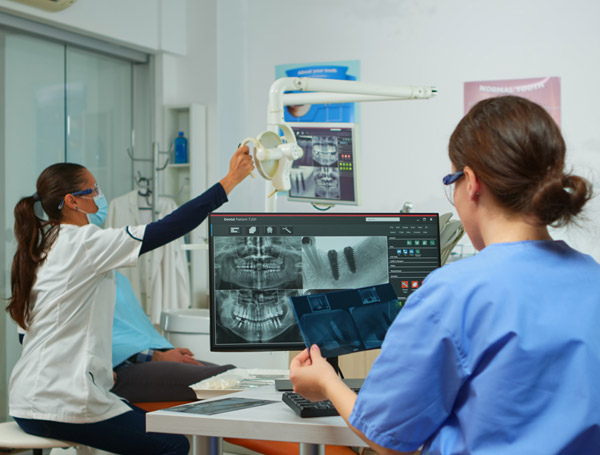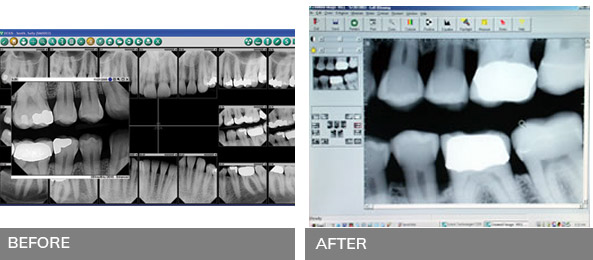Dental & Digital X-Rays
Dental and digital x-rays are a major part of catching and diagnosing dental
Dental x-rays are one of the most useful diagnostic tools a dentist can use to detect damage and disease that can’t be seen during a regular dental exam.
Dental & Digital X-Rays in Coral Gables, Hialeah, Kendall & Hollywood, FL
Dental x-rays (radiographs) are an essential part of any dental care treatment plan. These x-rays are diagnostic, however they can also be preventative, since they help dentists diagnose any potential oral care issues in your mouth before they have the chance the become a major problem. X-rays can be taken both inside (intraoral) and outside (extraoral) of your mouth. Keep reading to learn even more about this dental procedure.

Digital X-Rays
Dr. Claudio Miro
Digital x-rays are the latest technology used to dental x-rays. There are different than traditional x-rays in many ways.
How They Are Different:
Uses an electronic sensor (instead of an x-ray film) to capture and store a digital image on a computer.
Digital images can be viewed instantly and enlarged.
Reduce radiation by 80-90% when compared to already low exposure of traditional x-rays.
Schedule Your next Appointment with us.

Dental X-Rays
Dr. Claudio Miro
In order to catch any potential problems, it’s vital to get dental x-rays conducted by your dentist or dental hygienist every six months with your dental cleaning and exams.
These X-Rays Allow Dentists to:
Check for cavities and periodontal disease
Look at tooth roots and check the status of developing teeth
Monitor good oral health through prevention.
Dental and digital x-rays are a major part of catching and diagnosing dental problems.
Dental x-rays are one of the most useful diagnostic tools a dentist can use to detect damage and disease that can’t be seen during a regular dental exam. These x-rays show the condition of your teeth, their roots, your jaw placement, and the overall composition of your facial bones. To help you get an even further understanding of dental and digital x-rays, we answered some frequently asked questions below.
The two main types of dental x-rays are intraoral (taken inside the mouth) and extraoral (taken outside the mouth). Intraoral x-rays are the most common type of dental x-rays and provide a lot of details. Meanwhile extraoral x-rays show teeth, but their main focus is the jaw and skull. A combination of these two types of x-rays ensures that anywhere a possible problem might arise gets checked.
Before Your Dental X-Ray
Make sure you tell your dentist or dental hygienist about any specific concerns or questions that you might have regarding the procedure or specific dental issues. That way, your dentist can pay extra attention and provide you with insightful answers.
During Your Dental X-Ray
During your dental x-ray, a dental professional will cover you with a heavy lead apron to protect you from radiation. Then, you will bite down on a small apparatus to hold the x-ray film in place as the technician takes an x-ray picture of the targeted area.
After Your Dental X-Ray
After your dental x-ray is taken, your dentist will discuss with you their findings and give you any recommendations for further treatments as well as other prevention techniques.
If you would like to schedule a consultation at one of our four convenient locations:
Coral Gables (305) 701-1932 | Hialeah (305) 701-1935 | Kendall (305) 701-1924 | Hollywood (954) 799-9369


